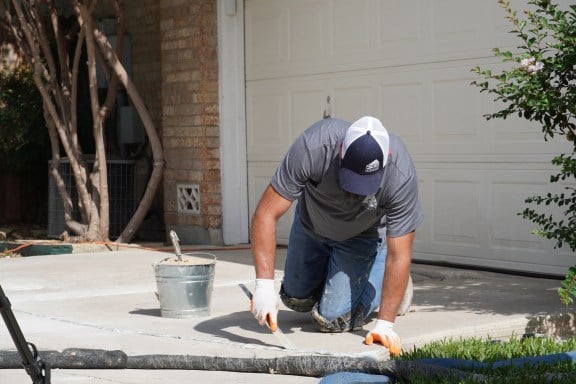Concrete lifting, also known as concrete leveling or mudjacking, is a process used to correct uneven or sunken concrete surfaces. While it's an effective solution, several common concerns often arise about its practicality and long-term effectiveness. Here are some key points to consider:
The process of concrete lifting is relatively simple. First, small holes are drilled in the sunken or uneven slab. Then, the special material is injected through the holes and into the void underneath the slab. As the material expands, it lifts the slab back into its original position.
- Effectiveness and Longevity:
- One major concern is whether concrete lifting provides a lasting solution. When done correctly, concrete lifting can stabilize a slab for many years. The longevity often depends on the condition of the soil beneath the slab and the quality of the lifting process (LiftRightConcrete) (ConcreteCare).
- Cost-Effectiveness:
- Concrete lifting is generally much cheaper than replacing a concrete slab entirely. Mudjacking, one common method, involves injecting a cement slurry under the slab to lift it. Polyurethane foam lifting is another method, typically more expensive due to the cost of materials but offering quicker curing times and less invasive application (ConcreteCare) (ConcreteCare).
- Aesthetic Concerns:
- Aesthetic issues, such as visible drill holes, are another concern. However, the holes used in foam lifting are smaller and can be less noticeable after they are patched and weathered. Mudjacking requires slightly larger holes, but these are also patched to blend with the existing concrete (ConcreteCare) (ConcreteCare).
- Environmental Impact:
- There are environmental concerns regarding the materials used, especially with foam lifting, which involves synthetic, petroleum-based chemicals. Although some foams are marketed as eco-friendly, their recyclability is still under question compared to the more natural materials used in mudjacking (ConcreteCare) (ConcreteCare).
- Potential for Further Settlement:
- Another common worry is the potential for further settlement of the lifted concrete. If the underlying soil is not properly compacted or if erosion continues, the concrete may settle again. Proper site assessment and addressing the root cause of the settlement (e.g., poor drainage) are crucial for long-term success (LiftRightConcrete).
- Safety and Chemical Reactions:
- Safety concerns, particularly with foam lifting, involve the potential for improper mixing of chemicals, leading to weak or brittle foam. Additionally, the heat generated during the chemical reaction can sometimes cause problems if not managed correctly (ConcreteCare) (ConcreteCare).
Concrete lifting can be a highly effective and economical way to address uneven concrete surfaces, but it is important to understand these common concerns and consult with experienced professionals to ensure the best outcome for your specific situation. For more detailed information, you can refer to sources like A-1 Concrete Leveling and Lift Right Concrete.





Comments